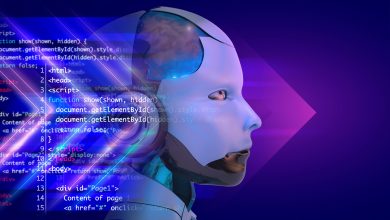In the fast-moving world of software delivery, speed and accuracy are everything. Time isn’t just money—it’s market share, competitive advantage, and customer loyalty. Every defect that slips into production is a risk: to your brand, your bottom line, and the trust you’ve built with your users both internal and external.
Yet, despite this reality, many QA organizations remain anchored to decades-old testing methods—frameworks that require manual selenium scripting, fragile recorders, and constant upkeep. It’s not that these methods never worked; they did, in their time. Like 1995. But in today’s world of continuous delivery, weekly (or even daily) deployments, and increasingly complex applications, those tools are like insisting on a horse and buggy to get to work on a modern highway.
They’ll get you there—eventually—but not in time to compete.
The Shift from Human-Led to AI-First Testing
The biggest transformation happening in quality assurance today is the move toward AI-first testing. And here’s the key: AI-first does not mean “AI-assisted.”
“AI-assisted” testing is what most so-called modern QA tools deliver—still heavily dependent on humans to design the logic, run the tests, and maintain scripts. It’s a little like strapping some extra water to your buggy: yes, it’s a new addition, but you’re still fundamentally driving the wrong vehicle.
AI-first testing is fundamentally different. It doesn’t wait for humans to tell it what to do, step by step. Instead, it uses machine learning, application modeling, and deep exploration to:
- Generate test cases automatically based on what it learns from the application and your business requirements.
- Write complete, runnable scripts for those cases without any manual scripting.
- Map epics and stories to tests instantly, so you always know where you stand on coverage.
- Achieve high application coverage, often 10× higher than manual-led methods or so called “test coverage”.
- Increase productivity by 90% or more, freeing QA teams from repetitive work.
- Find 10× more bugs than traditional approaches, often in places humans never thought to look.
Why Human-led Test Automation Can’t Keep Up
Human-led automation sounds like a contradiction, but it’s still the reality for many QA teams.
Here’s why it’s falling behind.
- Creation Is Slow
Building test scripts by hand takes significant time. Each flow must be defined, coded (or recorded), and adjusted. For complex applications, that can mean weeks just to automate a handful of core scenarios. - Coverage Is Limited
Human testers, even experienced ones, tend to focus on the “happy path” and a few known edge cases. That leaves the vast majority of user flows in the application untested, especially combinations of actions or data states that aren’t obvious. - Maintenance Is Constant
Applications evolve with every sprint. UI changes, new workflows, and modified logic all require updates to existing scripts. Legacy automation tools make this a manual process, eating up much of a team’s time. - Bugs Still Slip Through
Even after weeks of preparation, a traditional test suite can miss the very bugs that cause real-world failures. When a customer is the first to spot the problem, the damage is already done.
AI-First Testing: How It Works
AI-first testing starts with an entirely different premise: let the system handle the repetitive, mechanical aspects of QA so humans can focus on higher-value work.
- Learning the Application
Instead of manually defining every path, an AI-first system explores the application on its own. Creates a Digital Twin. It clicks, types, navigates, and observes results, just as a user would—but at machine speed and scale. - Generating Test Cases Automatically
From that exploration, it generates thousands of test cases—each with valid steps, expected outcomes, and assertions. These aren’t generic smoke tests; they reflect actual workflows, edge cases, and user behaviors. - Creating Runnable Scripts Without Scripting
Once cases are defined, the AI generates full test scripts automatically. No Selenium coding. No recorder sessions. No “copilot” prompts. - Continuously Adapting
As the application changes, the AI updates its understanding and adjusts the tests accordingly—maintaining coverage without manual intervention.
Here’s a paragraph you can insert into the article:
The Digital Twin
A critical enabler of true AI-first quality assurance is the use of a digital twin of the application. A digital twin is a complete, living model of every screen, element, state, and connection in the system—captured and stored so the AI can explore it at lightning speed without waiting for real-time page loads. This means every locator, every workflow, every conditional path is instantly available for analysis and test generation. By working against this virtual blueprint, AI can produce thousands of executable tests in minutes, map coverage down to the element level, and adapt instantly to changes in the application. The result is unmatched speed, precision, and completeness in test coverage—something impossible to achieve with manual-led or recorder-based methods.
Coverage and Bug Detection at an Entirely New Level
One of the most powerful advantages of AI-first testing is coverage. Legacy methods might realistically achieve 10% application coverage. AI-first methods can reach 80%, 90%, or more—often increasing old-style “test coverage” tenfold.
Why does this matter? Because more coverage means more opportunities to uncover hidden defects:
- Logic flaws that only appear when certain data combinations occur.
- Race conditions that happen under specific timing scenarios.
- UI anomalies that surface only in certain browser/device combinations.
- Regression issues that slip in unnoticed when unrelated features are updated.
By exploring every possible path through an application—not just the ones humans think of—AI-first testing exposes bugs that traditional approaches miss entirely.
Productivity Gains That Change the Game
The productivity impact is equally dramatic. QA teams that once spent 80% of their time on script maintenance can now spend that time on:
- Strategic risk analysis
- High-value exploratory testing
- Collaboration with product teams to refine requirements and improve user experience
And because the AI generates tests so quickly, teams can keep pace with fast-moving development cycles—validating new builds daily or even multiple times per day.
Organizations adopting AI-first testing report productivity improvements of 90% or more, and in some cases 100× faster script creation compared to legacy methods. That’s not 100% faster—it’s orders of magnitude faster.
The Cost of Standing Still
It’s tempting to think, “Our current process works well enough.” But in competitive markets, “well enough” is a dangerous mindset.
Every day spent maintaining brittle test suites or running manual regression cycles is a day you’re:
- Delaying releases that could be generating revenue.
- Spending more on labor than you need to.
- Risking defects in production that will cost exponentially more to fix later.
When a customer finds a bug, the cost isn’t just the engineering time to fix it. It’s the support costs, the lost conversions, the churn, and the reputational damage. And if your competitors are already adopting AI-first methods, you’re falling further behind every sprint.
Real-World Impact
Industries from finance to healthcare to retail are already using AI-first testing to transform their QA. The benefits are consistent:
- Faster releases without sacrificing quality.
- Dramatically higher bug detection before production.
- Reduced QA burnout from repetitive manual tasks.
- Better alignment between development and QA, since both can speak in terms of epics, stories, and coverage rather than script counts.
The organizations that adopt this approach are not just improving QA—they’re creating a competitive advantage.
Why “AI-Assisted” Isn’t Enough
Many tools on the market today advertise themselves as “AI-powered” or “AI-assisted.” But in practice, they still require humans to do the bulk of the work. In most cases it’s just a recorder with some AI bells. They may offer “self-healing” locators or suggest test cases, but they don’t eliminate the scripting, the recording, or the constant maintenance.
This is AI as window dressing—a horse and buggy with LED headlights. The real transformation comes when the AI is responsible for fully generating (by itself), maintaining, and running the tests autonomously.
The Human Role in an AI-First World
It’s important to address a common fear: that AI-first testing will replace QA engineers. While it is replacing manual testers, the reality is that it redefines the QA engineer role to focus on work that demands human judgment and strategy:
- Designing test strategies that align with business goals.
- Exploring new features creatively to uncover experience flaws.
- Analyzing test results and prioritizing fixes.
AI-first methods make teams more impactful. And capable QA engineers who learn these AI skills become the robot overlords. Which is a better place to be than ignoring this amazing advance.
This Is Not the Future—it’s Now
AI-first testing isn’t a theoretical capability. It’s being deployed in production environments today, finding bugs no human-designed suite ever caught, and delivering release readiness at a pace that would have been unthinkable a few years ago. In fact, the first AI script generation was launched back in 2018 and has found millions of bugs on its own since then. And has changed the game for those who embraced it, and placed them in the lead with AI in QA.
In short order, this approach will be the norm. Teams that wait will find themselves trying to merge into a highway where everyone else is already driving electric sports cars—while they’re still in a horse and buggy.
The Road Ahead
As AI models become more sophisticated and application architectures more complex, the gap between AI-first testing and traditional methods will only grow. This is happening so rapidly, incredible advances are being made monthly. Eventually, human-led QA will be seen as a relic—necessary in its time, but wholly inadequate for the demands of modern software delivery.
If you’re still relying on manual testing, recorders, scripts, and human-led test design, now is the time to reassess. The question is not whether AI-first testing will dominate—it’s how long you can afford to operate without it. Every day, you are becoming a relic by not making the jump.
Because in this race, it’s not just about speed. It’s about survival.



